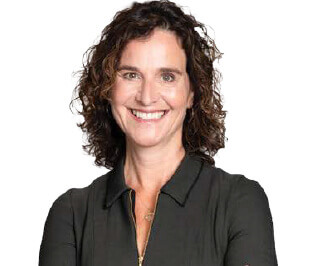Chief Missing Officer
If you happen to be a CMO, the first thing to say is congratulations. You’ve risen to the top of your discipline, displayed mastery of all the bewildering complexities of markets, consumers and delivery, and stayed abreast of societal forces and macro trends.
You’re not just a senior marketer, you’re the chief marketing officer – with the budgets, responsibilities and clout to prove it. And while the challenges can be daunting, you can’t help but feel a touch of pride at belonging to the vaunted C-suite – that tier of peers where everyone’s title is the same but different.
Chief something officer. That’s how it works. ‘Chief’ at the beginning, ‘officer’ at the end and, in between, the sandwich filling that designates which of the corporation’s cherished functions is being isolated. Typically, those ‘fillings’ will be these:
• Executive
• Financial
• Operating
• Legal
• People
• Information
• Growth
• And of course, you, with your marketing remit.
So many well-resourced chiefs. So many competent officers. So many dotted lines of responsibility to carefully navigate and traverse. The business bases appear well and truly covered. Who in their right mind would wish to add yet another chief to the collection?
Well, I would.
Enter the chief creative officer
Look again down that list and what do you see unrepresented? What is the quality – more than just a function – that is glaringly absent? It is creativity, which is why I argue for the presence of a chief creative officer.
Sure, some businesses have them – the ones in categories where creativity of some form amounts to the product: advertising, fashion, design.
But in other kinds of categories, it’s as though not being defined by creativity is license not to include it, not to bring it inside the corporate membrane – a mercurial force that remains on the outside, perhaps to be flirted with now and then, but too volatile to be housed in that corridor of Cs.
Yet even businesses in the most routine sectors will need to bring imagination and originality to bear if they are to outcompete rivals and not just stay tamely inside the boundaries of category norms. And since ideas are said to come from anywhere, leaders from across the disciplines are invited to airless hotel rooms to try to conceive them. 
It is here, in those brainstorming innovation sessions, that the presence of a chief creative officer will be felt with most discomfort by your more metric-bound peers.
Forget the clichés about boldness or being lateral or thinking outside the box. They serve only to dilute the truth of the creative impulse. In my experience, there are two characteristics that define the way true creative leaders go about their work.
The first is defiance. Mention the much-bandied term ‘best practice’ to them and they bombard you with whys. And while they will nod to your answers they will ignore them anyway, based on a conviction that what has been true up until now is not going to be fuel for a breakthrough tomorrow.
The second characteristic is a searing honesty, a willingness to confront the naked reality of the task ahead. In a YouTube interview, VaynerMedia chief creative officer Steve Babcock described commercial creativity as the art of “getting people to care about something they don’t care about”.
Contrast that candour with the ever-upbeat vernacular of the modern corporation, with its love of ‘awesome’, its emphasis on ‘passion’, its breathless talk of ‘right to win’.
People don’t care. This is the start point for the generation and constant rejection of ideas that follows. It is a wearying and dispiriting process, until it isn’t, until a promising thought breaks through, to be probed and shaped and sharpened into something that stands a chance of piercing the haze of indifference.
The agency inside
This is also the point where the role of chief creative officer most naturally dovetails with your own – in the task of bringing unity and originality to every aspect of the outward-facing expression of your brand.
Be prepared for this to mean not just a tough review of your current sprawling agency arrangements, but a recommendation to redeploy the budgets to bring all creative endeavour in-house.
Traditionally, marketers have resisted the ‘agency inside’ approach, partly through the myth that creative types need a mixed diet of challenges if they are not to get stale.
What creative people actually want is the chance to do great work. Full stop. And, as a counterfactual to the myth, it is instructive to look at two big brands that have thrived through building creative capability in-house.
Specsavers has gone this route since 1984 and seen the benefits of the consistent but refreshed application of a savvy, engaging and often laugh-out-loud funny tone of voice. It hasn’t done so badly at the awards ceremonies either, with a Cannes Lion, Campaign Big Award and IPA Effectiveness Gold on its shelves.
Alt-milk brand Oatly is every bit as impressive. The communications vernacular was laid down by the brand’s global chief creative officer John Schoolcraft, who chopped an already short brand name into two with a playful hyphen, did away with cliched pouring and product enjoyment shots and captured the brand’s attitudinal palette in a wood covered brand book. Now, with its own creative talent in three continents, Oatly exudes a combination of distinctiveness and cohesion that would be all but impossible to achieve with a bunch of nervously competing agencies in tow.
Nobody said it’s easy
Today’s businesses are not above talking up big ideas, even if they too rarely have them. “We’re here to create the future,” they are apt to declare, or: “Our mission is to create a better world.” But you get the feeling that ‘create’ is a verb of convenience, one that’s easily interchangeable with, say, ‘deliver’, ‘provide’ or ‘bring about’.
It isn’t. To create is to confront the emptiness of the blank slate, to feel the fear of not conceiving, to dig down into your ego and bear the pitiless critique of your own judgement, and to keep digging through the pain until something different and surprising and new is unearthed.
Creative people aren’t easy; trust me, I know. But if you happen to be a CMO, with all the challenges of growth in a complex world laid at your door, you’ll be a braver, clearer, stronger one with a talented chief creative officer by your side.
